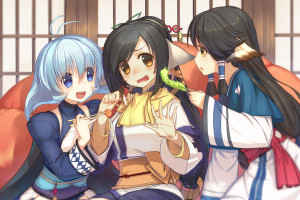The term Doujinshi has become increasingly prominent within manga and anime communities worldwide, representing a vibrant and dynamic aspect of Japanese fan culture and independent publishing. For many fans and aspiring creators, understanding what Doujinshi entails is essential to appreciating its cultural significance and potential for creative expression. This comprehensive guide explores the origins, characteristics, types, and evolving trends of Doujinshi, offering insights into its role in shaping modern manga and fan communities.
What Is Doujinshi?
Etymology and Definition
The word Doujinshi (同人誌) combines the kanji “doujin” (meaning “same person” or “fellow”) and “shi” (meaning “magazine” or “publication”). Originally, it referred to self-published works created by groups or individuals with shared interests. In the context of manga and anime, Doujinshi specifically relates to independent, fan-made publications that often feature stories or artwork inspired by existing franchises or entirely original content.
Unlike officially licensed manga published by large corporations, Doujinshi is characterized by its self-published, independent nature, with creators retaining control over their work and distribution.
Characteristics of Doujinshi
Self-Published and Independent Works
Doujinshi are primarily created by amateur artists and writers—though some professional manga artists began their careers in the doujin circle—who publish their works independently, usually at conventions or via online platforms.
Variations in Content and Style
The content ranges widely from original stories to derivative works based on popular manga, anime, or video game characters. Artistic styles vary from highly detailed to more simplistic, reflecting the diversity of creators involved.
Authorship and Production
Many Doujinshi are collaborative efforts, involving writers, illustrators, and editors working together. The process often mirrors small-scale publishing, with creators producing in limited print runs or digital formats to minimize costs and reach targeted audiences.
History and Evolution of Doujinshi
Early Beginnings Post-World War II
After World War II, fan communities in Japan began creating self-published manga as a way to share their passion and develop their skills. These early efforts laid the groundwork for the modern Doujinshi culture, providing a space for amateur artists to express themselves outside mainstream publishers.
The Rise During the 1980s and 1990s
The explosion of fan conventions like Comiket (Comic Market) in the 1980s increased visibility and opportunities for Doujinshi creators. These events became essential venues for distribution and networking, fueling the community’s growth. The digital revolution in the 1990s further expanded accessibility and allowed creators to reach global audiences.
Milestones and Legal Shifts
| Milestone | Description |
|---|---|
| Early Fan Zines | Self-published works circulated among local fan groups post-WWII |
| Comiket Launch | Established in 1975, became the world’s largest doujinshi event |
| Legal Challenges | Ongoing debates about copyright and fair use, leading to clearer boundaries |
| Digital Age | Platforms like Pixiv and Booth enable global distribution of digital Doujinshi |
Genres and Types of Doujinshi
Popular Genres
- Romance and Slice-of-Life: Focused on everyday stories and emotional relationships.
- Action and Adventure: Dynamic scenes, battles, and exciting quests, often inspired by shonen manga.
- Parodies and Comedy: Humorous takes on existing franchises or original satire.
- Genre-Specific: Such as BL/Yaoi (boys’ love), Yuri/GL (girls’ love), or horror.
Thematic Content
Original vs. Derivative Works
While many Doujinshi are derivative — depicting characters or storylines from established media — a significant portion features completely original stories, reflecting the creativity and diversity of the community.
Mature and PG-rated
The content can range from suitable for all ages to highly explicit material. Doujinshi creators often specify their content ratings, and community norms encourage respectful engagement with sensitive themes.
The Production and Distribution of Doujinshi
Creation Process
Writing, Illustrating, and Editing
The process begins with story development, followed by illustrations and layout. Many creators work meticulously to produce polished works, sometimes forming collaborative circles or teams.
Collaborations
Fan circles frequently pool talents—writers, artists, and editors—to compose cohesive and appealing Doujinshi.
Publishing Methods
- Self-Publishing Print: Physical copies are printed in limited runs, often at conventions or through local bookstores.
- Digital Formats: Increasingly popular, with works uploaded to websites like Pixiv, DeviantArt, or specialized platforms such as Booth.
Distribution Channels
- Fan conventions like Comiket remain vital for physical sales.
- Online platforms facilitate broader, international access and sales—allowing creators to monetize their work.
- Local shops and specialty markets often stock popular Doujinshi titles, especially in Japan.
Legal and Ethical Considerations in Doujinshi
Copyright and Fair Use
The boundary between fan works and copyright infringement is complex. Many Doujinshi creators operate in a legal gray area, relying on “fair use” or permission, but issues persist, especially with commercial distribution.
Respect for Original Creators
Ethically, it is important for Doujinshi artists to respect the intellectual property rights of the original creators and avoid content that could harm their reputation.
Community Norms and Controversies
Incidents involving censorship, police crackdowns, or legal action against certain works highlight ongoing debates about fan creativity vs. intellectual property rights. Balancing artistic freedom with legal boundaries remains a challenge for the doujin community.
Cultural Impact and Significance of Doujinshi
Influence on Mainstream Media
Many professional manga artists started their careers creating doujin works. Similarly, some popular franchises owe part of their success to influences originating in fan-created Doujinshi.
Creative Outlet and Innovation
Doujinshi provides a platform for experimentation, allowing artists to explore new styles, genres, and narratives without the constraints of mainstream publishing.
Community and Social Aspects
Creating and sharing Doujinshi fosters strong fan communities, encouraging dialogue, feedback, and collective growth — all supporting independent creators.
Global Perspectives on Doujinshi
- International communities actively participate through online platforms, translating and sharing works across borders.
- Differences include Western indie comics’ varied formats and more explicit content compared to Japanese doujin culture, though similarities in DIY ethos are notable.
Emerging Trends and Future of Doujinshi
Digital Evolution and Platforms
Platforms like Pixiv and crowdfunding sites such as Kickstarter are transforming how Doujinshi is created and distributed, with more creators reaching global audiences.
New Media and Technologies
The integration of NFTs, virtual reality, and augmented reality is opening new avenues for interactive and collectible Doujinshi, pushing the boundaries of traditional media.
Genre Expansion
Growing diversity in themes, styles, and media indicates that Doujinshi will continue to evolve, reflecting broader societal changes and technological advances.
Summary Table of Key Doujinshi Insights
| Aspect | Description |
|---|---|
| Definition | Self-published, fan-made manga and art works outside mainstream publishers |
| Origins | Post-WWII fan activities in Japan, formalized by conventions like Comiket |
| Content Types | Original stories, fan-inspirations, parodies, adult themes |
| Production | Writing, illustrating, editing, collaboration |
| Distribution | Conventions, online platforms, specialty shops |
| Legal Challenges | Copyright issues, fair use debates, ethical considerations |
| Cultural Impact | Launching professional careers, inspiring mainstream media, fostering communities |
| Future Trends | Digitalization, global expansion, new media integration |
Frequently Asked Questions (FAQs) About Doujinshi
- What distinguishes Doujinshi from professional manga?
Doujinshi are independent, self-published works created outside of major publishing companies, often by fans or amateur artists, and are usually produced in limited quantities or digital formats. - Can anyone create and distribute Doujinshi?
Yes, as long as creators respect legal boundaries and community norms. Many online platforms facilitate easy distribution for aspiring artists. - Are Doujinshi legal?
The legality depends on copyright and fair use considerations. Creating derivative works of copyrighted characters without permission can be risky, but many creators operate within acceptable boundaries or seek permission. - Why do Doujinshi matter culturally?
They serve as an outlet for creative expression, influence mainstream media, and foster community-building among fans and creators. - How has technology changed Doujinshi culture?
Digital platforms, online sales, and crowdfunding have made Doujinshi more accessible and global, encouraging innovation and diverse genres. - What are common Doujinshi genres?
Romance, action, comedy, fantasy, BL/Yaoi, Yuri/GL, horror, and more. - Can non-Japanese fans participate in Doujinshi culture?
Absolutely. The internet has made it easier for international fans to create, share, and enjoy Doujinshi. - What should aspiring Doujinshi creators know?
Focus on originality, respect copyright laws, participate in conventions or online communities, and keep experimenting with styles and themes.
As the landscape of entertainment continues to evolve, Doujinshi remains a compelling testament to the power of fan-driven creativity and independent publishing. Whether you’re a passionate fan, an aspiring artist, or simply curious about this unique cultural phenomenon, exploring Doujinshi opens a window into an innovative world where fans become creators and boundaries are constantly pushed.
For further resources, visit Comiket and Pixiv to discover vibrant Doujinshi communities and shops.





